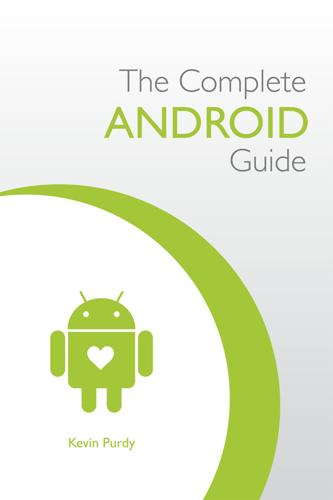
The Complete Android Guide: 3Ones
by
Kevin Purdy
Published 15 Apr 2011
Direct dial and Direct message skip the middle steps and deliver you directly to phone dialing or SMS writing. Directions & Navigation: If there's a place you often want your phone to help you walk or drive to, select this shortcut, then enter the address. You can choose whether to have it bring up a map with listed directions, or turn on your phone's GPS-powered, turn-by-turn navigation system. Gmail label: Quickly pull up emails you've labeled a certain way in Gmail, or that you've set up a filter to label. Music playlist: It, well, brings up a music playlist you've created. Settings: Provides quick access to a fairly wide and deep selection of settings screens in your phone.
…
Long Press an Event to See Details Everything you've entered in about the event, or that was automatically pulled from a server, is right here. The standard time, date, and place are there, too, but notice the location listing that looks like a link. It is a link, actually—click it, and if you've entered in a proper address, it will pull up in Maps, where you can then easily get directions or turn-by-turn Navigation to that spot. You can change your attendance status here, see who you've invited is confirmed as attending, contact those people by pressing their user icon, and, most helpfully, change, add, and remove reminders. The reminders you add and change are right on your phone. They will pop up in your Notifications Bar, at a minimum, but can also activate a ringtone, vibrate, and blink your notification light, if you'd like.
…
The upper-right has the Street View thumbnail, but also an empty "Star" icon, which you can click to "Starred Items," where you'd keep a list of frequently visited spots or points of interest. The buttons below provide quick access to, from left, seeing the spot on the map again, getting directions or turn-by-turn Navigation to this spot, a direct calling link if it's a listed business, and a full-fledged Street View exploration. "What's Nearby" Option Underneath the buttons are list items that are more like additional buttons. "What's nearby?" pops up a list of the five closest spots that Google can find, which you can click to bring up that new place in this same black detail screen.

Androids: The Team That Built the Android Operating System
by
Chet Haase
Published 12 Aug 2021
That is, it requires more effort and time to draw a map’s geometry, vector by vector, than it does to display an image. But it was a thousand times less data. Andy knew that it would be important for the upcoming Verizon device. “Turn-by-turn navigation, on Droid, became one of the marquee features.” Keith continued working with Charles on both productizing vector maps and on the turn-by-turn navigation feature. There were still hurdles to cross in launching the feature on the Droid. For one thing, Verizon already had an existing application, VZ Navigator, that they charged money for and wanted to continue offering.
…
Within a year or two, we managed to get just the cell one to under 300 meters and the Wi-Fi from about 300 to 75 meters. So just the data collection291 from Android driving that really helped get the blue dot much much tighter.” Navigation “At the same time I joined the Maps team,” said Charles, “I started working on turn-by-turn navigation. Back then, you would buy Garmin and you would pay money. Or even on an iPhone you would pay $30/month for that. We felt like we could do this amazing experience.” But another problem had to be solved first: the data format that the Maps app was using. The maps that were displayed in the app at that time were basically just static pictures, which were problematic both in terms of usability and size.
…
The maps that were displayed in the app at that time were basically just static pictures, which were problematic both in terms of usability and size. “We were using raster maps, which were PNGs.292 If you rotated the map, the text was upside down. If you wanted to tilt the map, you couldn’t.” Also, the images used for the maps were large and required large bandwidth to download. Keith Ito, then in the Seattle office, was working on turn-by-turn navigation. To address the data problem, he worked on a new way of displaying maps, using vectors.293 Vectors are a way of describing the graphics of an image (like a map) with geometry instead of a picture. Rather than sending down map images (with text embedded in that picture), the server sent down a geometric description that would be drawn by the device at the appropriate resolution and rotation.
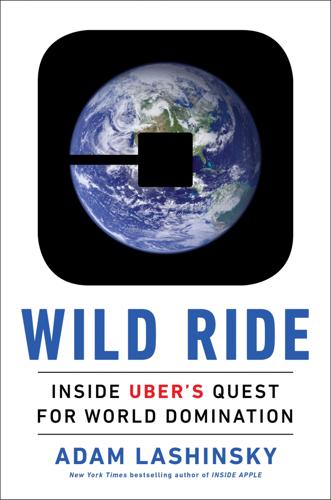
Wild Ride: Inside Uber's Quest for World Domination
by
Adam Lashinsky
Published 31 Mar 2017
“I remember getting picked up in an UberX, and I would tell the person where I’m going and they’d pull over and they’d type into this little TomTom device or whatever, and I’m like, ‘Oh, this is so bad.’” He mandated new “no-brainer” features that changed the Uber experience: destination, inputted by the rider; and turn-by-turn navigation on the Uber driver app. Uber went live with both features in August 2014 and in one fell swoop drastically lowered the turnaround time for rides. It also foreshadowed a future battle. Before Uber, the difference between a good cab driver and a bad one was their knowledge of their city’s streets.
…
There is a feature in the Uber app that allows vets like Lewandoske to identify themselves as veterans, but riders aren’t seeing his badge. He has sent multiple e-mails to Uber customer service. “They respond that the issue is resolved,” he says. “It’s not resolved until I say it’s resolved.” He keeps driving, though. And he confesses that Uber reminds him of the military in one way. “It’s the turn-by-turn navigator that’s the drill sergeant now,” he says. CHAPTER 10 The Autonomous Future One of the most important jobs of any business leader is to stay abreast of factors that could disrupt their comfortable status quo. This might be new competitors. It could be new segments of the market their company doesn’t currently serve.
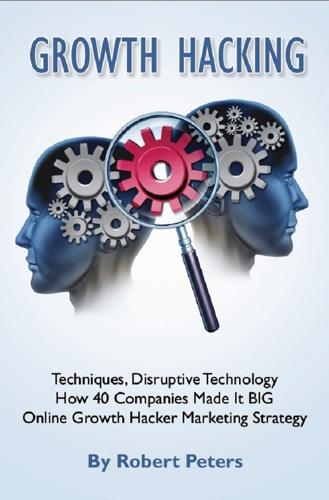
Growth Hacking Techniques, Disruptive Technology - How 40 Companies Made It BIG – Online Growth Hacker Marketing Strategy
by
Robert Peters
Published 18 May 2014
As a voracious reader himself, Otis Chandler came into the development of Goodreads with an intuitive understanding of market fit bolstered by his tech acumen as a software engineer. The combination proved highly effective and made Goodreads a prime prospective partner for Amazon’s continuously evolving book/reader ecosystem. Waze The free turn-by-turn navigation app Waze debuted in Israel in 2008 and in six years became a worldwide phenomenon that has redefined how people cope with one of the greatest headaches of the modern world — traffic. The app provides layers of information on top of digital maps that help drivers avoid traffic snarls. These include the location of road work, car accidents, and law enforcement speed traps as well as extras like the location of the cheapest gas available on a driver’s given route.

Digital Wars: Apple, Google, Microsoft and the Battle for the Internet
by
Charles Arthur
Published 3 Mar 2012
Feature phones there have all the capabilities of the smartphones used in the West – except downloadable apps. Japan turns out to be a smartphone desert. Dediu calls the date when half of users in a market own smartphones ‘the tipping point’, and suggests that ‘that’s the point where we’ll stop using the word “smartphone”’. Get lost In December 2009, version 1.6 of Android introduced ‘turn-by-turn’ navigation with Google Maps: choose a destination, and the screen would show you the directions, augmented by voice direction. It was functionality of a dedicated satellite navigation system which would easily cost £100 or more made free. Google had commoditised another web service, using its investment in mapping and routing – which it had offered through the desktop browser since February 2005 (having acquired the company making it in October 2004).
…
He outlined what Apple had wanted to bring – ‘turn-by-turn directions, voice integration, [3D views] and vector-based maps. In order to do this, we had to create a new version of Maps from the ground up.’ In other words, Cook was making it explicit that Google wouldn’t play ball. One senior Apple executive later said to me – through gritted teeth – ‘they [Google] went back on their word’ to provide turn-by-turn navigation. Separately, I asked a senior Google executive who had dropped whom. ‘Not us!’ he shot back. Even more surprising than the fact of Cook’s apology was its following paragraph, suggesting that people use alternative apps – Microsoft’s Bing, Mapquest, Israeli startup Waze – or Google’s or Nokia’s services, via the web.
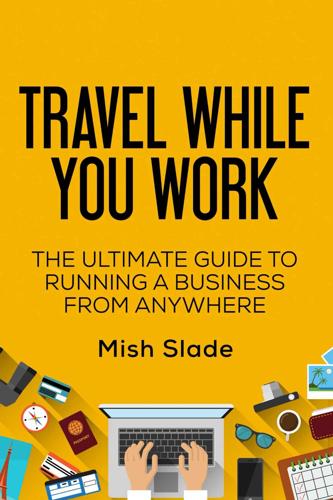
Travel While You Work: The Ultimate Guide to Running a Business From Anywhere
by
Mish Slade
Published 13 Aug 2015
There are a few disadvantages to using offline Google Maps though – namely that you can't search for points of interest or get directions to a specific place. If an offline Google Map isn't available for your destination country (or if you want your map to have a bit more functionality), use OsmAnd (www.worktravel.co/osmand) – a phone app for offline mapping, which also offers turn-by-turn navigation and an offline point-of-interest database. There are lots of other offline maps out there (and some people say they like Here Maps – www.worktravel.co/here), but I always come back to OsmAnd. Figure out how to get from the airport to your apartment in advance. If it's a train, what's the exact route – and how do you buy tickets?

The Glass Cage: Automation and Us
by
Nicholas Carr
Published 28 Sep 2014
,” New York Times, February 2, 2012. 8.Gary E. Burnett and Kate Lee, “The Effect of Vehicle Navigation Systems on the Formation of Cognitive Maps,” in Geoffrey Underwood, ed., Traffic and Transport Psychology: Theory and Application (Amsterdam: Elsevier, 2005), 407–418. 9.Elliot P. Fenech et al., “The Effects of Acoustic Turn-by-Turn Navigation on Wayfinding,” Proceedings of the Human Factors and Ergonomics Society Annual Meeting 54, no. 23 (2010): 1926–1930. 10.Toru Ishikawa et al., “Wayfinding with a GPS-Based Mobile Navigation System: A Comparison with Maps and Direct Experience,” Journal of Environmental Psychology 28, no. 1 (2008): 74–82; and Stefan Münzer et al., “Computer-Assisted Navigation and the Acquisition of Route and Survey Knowledge,” Journal of Environmental Psychology 26, no. 4 (2006): 300–308. 11.Sara Hendren, “The White Cane as Technology,” Atlantic, November 6, 2013, theatlantic.com/technology/archive/2013/11/the-white-cane-as-technology/281167/. 12.Tim Ingold, Being Alive: Essays on Movement, Knowledge and Description (London: Routledge, 2011), 149–152.
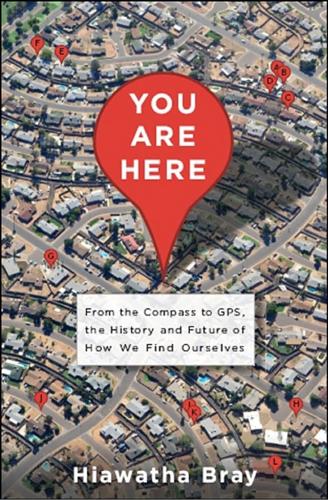
You Are Here: From the Compass to GPS, the History and Future of How We Find Ourselves
by
Hiawatha Bray
Published 31 Mar 2014
It amounted to a shamefaced concession that location and navigation services had become essential features in a state-of-the-art device. All future iPhones were GPS capable, as were other rival handsets such as Research in Motion’s BlackBerry phones. Google insisted on GPS in all phones that would run its Android operating system, launched in 2008. A year later Google built turn-by-turn navigation into Android as a free feature, eliminating the need to download a third-party app and pay a monthly fee. In 2012 Apple finally climbed onto the bandwagon by adding free navigation to its updated iPhone software. According to market research firm ABI Research, Americans bought 228 million cell phones in 2011; of these 211 million were GPS capable—more than 90 percent.

Peers Inc: How People and Platforms Are Inventing the Collaborative Economy and Reinventing Capitalism
by
Robin Chase
Published 14 May 2015
Roy pulls out his smartphone and enters the Concord address using Waze. Starting with the excess capacity found in smartphones, apps, and Google Maps, Waze goes even further. Think for a moment of all the years and the millions of trips that people have been driving with the assistance of turn-by-turn navigation. Meanwhile, two extremely valuable pieces of information were being generated every single time a navigational system was used: your route choice (fifteenth example) and your actual speed at each location at a specific time on a specific day of the week (sixteenth example). It was a gold mine of data that was overlooked and thrown away for years.

Virtual Competition
by
Ariel Ezrachi
and
Maurice E. Stucke
Published 30 Nov 2016
As with all economies of scale and network effects, the technology and data can go much further and add more value when at the disposal of a super-platform. For instance, Google’s driverless car fleet would collect realtime data on street traffic, construction, and so on. Th is data, along with that collected on its Waze and Google Maps apps, could give Google a competitive advantage in turn-by-turn navigation systems. If commuters want to know the latest traffic conditions, they would likely turn to Google’s Waze and Maps apps. As more traffic data is quickly pumped through Google’s super-platform, its driverless cars could better avoid traffic jams—thereby reducing electricity/fuel costs and travel time, which in turn increases its competitive advantage over Uber.
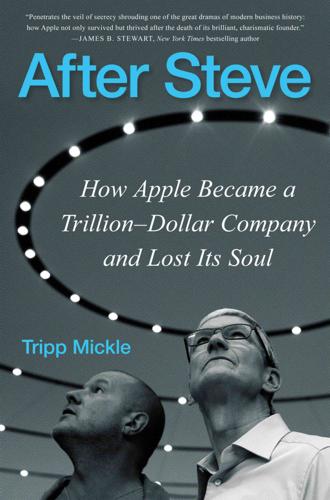
After Steve: How Apple Became a Trillion-Dollar Company and Lost Its Soul
by
Tripp Mickle
Published 2 May 2022
Since its launch in 2007, the iPhone had relied on Google’s map and search services for navigating the real and digital worlds. But when Google had launched its own operating system, Android, it had gone from friendly partner to rival. To help Android gain market share, Google planned to give it sophisticated mapping features, such as turn-by-turn navigation, before it gave those features to the iPhone. It was an advantage that had the potential to accelerate its push to dethrone Apple as smartphone king. Forstall’s software team proposed retaliating with a simple plan called “Maps 2012.” Though modestly named, it was ambitious in scope. It called for Apple to create a mapping system that would be global and dynamic, so that users could zoom in on images in real time and get turn-by-turn directions to a destination.
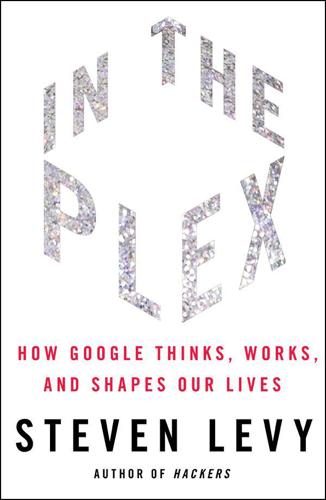
In the Plex: How Google Thinks, Works, and Shapes Our Lives
by
Steven Levy
Published 12 Apr 2011
The accuracy of the transcription resulted from the data Google had gathered from billions of callers to its 1-800-GOOG-411 directory assistance service. Some critics wondered whether Android was actually superior in some ways to the iPhone. The Droid was also the first Android phone that used another feature Google recently introduced, a high-quality implementation of the “turn-by-turn” navigation that various companies offered in stand-alone GPS devices and other phones. While those competitors charged a monthly fee of $10 or $15 for the service, Google’s version was free. As with other cases when Google had decimated an entire subindustry by offering a product for free, the company was anything but apologetic.